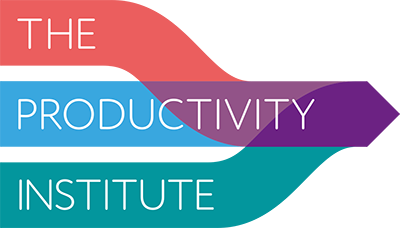Productivity Measurement Analysis series – United States, Q2 2024 by Martin Fleming.
General Summary and Main Figures
U.S. nonfarm business sector labour productivity increased at a seasonally adjusted annual rate (SAAR) of 2.3% in the second quarter (Q2) of 2024, the U.S. Bureau of Labor Statistics (BLS) reported on August 1.
The release was based on early second quarter and more recent first quarter 2024 output, hours, and compensation source data. The first quarter revisions resulted in a 0.2 percentage point increase in first quarter 2024 nonfarm business sector labour productivity growth, bringing the first quarter productivity increase to 0.4% SAAR.
In the second quarter, nonfarm business sector output increased 3.3% and hours worked increased 1.0%, both quarter-over-quarter (QoQ) at a seasonally adjusted annual rate. From the same quarter a year ago, nonfarm business sector labour productivity increased 2.7%.
Unit labour costs in the nonfarm business sector rose at a 0.9% SAAR in the first quarter, reflecting a 3.2% increase in hourly compensation and a 2.3% increase in productivity. Unit labour costs increased 0.5% over the last four quarters.
U.S. Productivity and Costs, Second Quarter 2024, Preliminary
|
Sector |
Quarter-on-year ago comparison, SAAR (Q2 2023) | Quarter-on-quarter comparison (Q1
2024) |
Pre-COVID-19 comparison, SAAR (Q4 2019) |
| Nonfarm Business | |||
| Labour Productivity | 2.7% | 2.3% | 1.6% |
| Unit Labour Cost | 0.5% | 0.9% | 3.4% |
| Manufacturing | |||
| Labour Productivity | 0.4% | 1.8% | 0.3% |
| Unit Labour Cost | 4.3% | 3.2% | 4.1% |
| Nonfinancial Corporate* | |||
| Labour Productivity | 3.3% | 1.9% | 2.0% |
| Unit Labour Cost | 1.0% | 2.5% | 3.2% |
*Q1 2024 most recent data. Comparison with Q1 2023, Q4 2023, and Q4 2019.
Manufacturing sector labour productivity rose 1.8% SAAR in the second quarter of 2024, as output rose 3.4% and hours worked rose 1.6%, all QoQ at SAAR. Unit labour costs in the manufacturing sector increased 3.2%, reflecting a 5.1% increase in hourly compensation and a 1.8% increase in productivity. Manufacturing unit labour costs increased 4.3% from the same quarter a year ago.
For the first quarter, manufacturing sector productivity was revised down substantially. Following a June 6 estimate of no change in first quarter productivity, the current estimate is a 1.1% SAAR decline in manufacturing sector productivity. Consequently, in the second quarter, manufacturing sector productivity was 0.4% above the year ago level with an annual average growth of 0.3% over the 18 quarter since the fourth quarter of 2019 prior to the onset of the COVID-19 pandemic. Over the same 18 quarter period, unit labour costs rose at annual average rate of 4.1%.
Insights into the Q2 2024 Productivity Release
After weak Q1 2024 U.S. nonfarm business sector productivity growth, the second quarter increase returned growth to the pace of 2023’s second half. On a year-over-year basis, output growth has exceeded 3.0% for four consecutive quarters while hours worked have increased at less than 1.0%. Unit labour costs have increased at a 2.5% rate over the period. Nonetheless, the long-term trend in nonfarm business sector productivity growth remains at 1.6%.
Conversely, the manufacturing sector continues to deliver disappointing results. Output, hours worked, and productivity are virtually unchanged since mid-2022, while unit labour costs have increased at an annual rate of more than 5.0% over the two-year period.
Discussion
After weak Q1 2024 U.S. nonfarm business sector productivity growth, the second quarter rebound does little to add clarity to the long-term trend. Notwithstanding four of five quarters of strong growth, the possibility of a productivity growth revival remains uncertain.
Early applications, such generative AI, are likely contributing to the productivity gains, as is strong demand, increasing efficiency and the enormous number of workers who have changed jobs over the past three years. It’s possible a long run of productivity gains are beginning. However, much work and innovation remain ahead. If long-term improvement is ahead, here are some signs to watch.
- For the realisation of sustained productivity growth improvement, product market competition can be expected to drive growth, but growth increments will be function of industry structure. In levelled sectors in which competitors are “neck-and-neck”, innovation intensity will be sustained and increments small. However, in unlevelled sectors with a leader and many followers, a significant contribution to growth can be expected when followers successfully innovate – presumably because of easy-to-use technology and/or nonrival/excludable means to increased value creation and lower resource cost.
- In addition, more elastic innovation success with respect to scientists and other developers can be expected to allow new entrants to improve their probability of success with a greater impact on innovation and growth.
- Decades of semiconductor technology innovation have given rise to enormous and powerful cloud computing resources. If successful, a resulting general-purpose technology (GPT) could take hold. However, GPTs require time for incubation and development prior to a period of deployment.
- GPTs do not come ready to use off the shelf. Instead, each new GPT requires an entirely new set of business processes before activation. Broader gains must wait until critical mass of components have been accumulated and it becomes profitable to switch from the previous GPT. Two periods are required – one for invention and another for deployment.
- Stronger productivity growth is a social good – workers get paid more, consumers and businesses benefit from innovative new products and services, and stronger growth creates more income for all. However, reality is more complicated. It appears the beneficial effects of productivity gains are outstripping any job displacement worries, but it is still early days for the widespread, constructive uses of AI.
